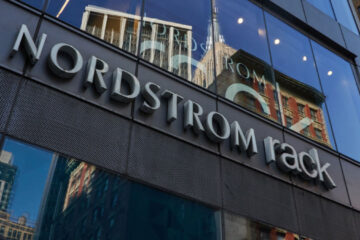It’s been another week for the auto industry and the analysts who cover it. Rivian’s Q4 2024 and full-year earnings garnered mixed reactions from analysts. A Tesla exec shared a critical update on a long-delayed project on a podcast, and Bank of America analysts see confidence in houses and babies but not cars.
Rivian posted its fourth-quarter and year-end 2024 earnings results on Thursday, February 20.
Rivian’s positive quarter draws skepticism from Analyst
On Thursday, February 20, California-based electric vehicle manufacturer Rivian (RIVN) posted its fourth-quarter and year-end 2024 earnings results.
In the last quarter of 2024, Rivian reported a gross profit of $170 million, which it credits as being driven by “improvements in variable costs, revenue per delivered unit, and fixed costs,” as well as “record revenues” resulting from the sale of regulatory credits, software and services, in addition to increasing the average sale price of R1T and R1S vehicles with the introduction of its Tri-Motor setup.
These moves also helped it post a $729 million year-over-year improvement in its adjusted EBITDA. In Q4, Rivian produced 12,727 vehicles and delivered 14,183 to its customers. In 2024, it made 49,476 of its EVs, and customers took home 51,579 of them. Initially, the company targeted production numbers of 57,000 units in 2024, which it reduced to just 47,000 to 49,000 in October due to supply and production issues.
Related: Rivian’s earnings growth is being thwarted by a major speed bump
But despite some speed bumps, including the Trump administration and Elon Musk’s Department of Government Efficiency’s closer look at a $6.6 billion loan for a planned factory in Georgia approved in the final days of the Biden Administration, Rivian CEO RJ Scaringe remained optimistic about the future; particularly the lower-priced R2 model.
“This quarter, we achieved positive gross profit and removed $31,000 in automotive cost of goods sold per vehicle delivered in Q4 2024 relative to Q4 2023,” Scaringe said. “Our focus on cost efficiency across the business is critical for the launch of our mass-market product, R2. The R2 bill of materials is approximately 95% sourced and is expected to be approximately half that of the improved R1 bill of materials.
“I couldn’t be more excited about R2, and I believe the combination of capabilities and cost efficiencies, along with the amazing level of excitement from customers, will make R2 a truly transformational product for Rivian.”
More Automotive:
Dodge confirms gas-powered Charger Sixpack coming this summerJeep parent makes executive overhaul as it searches for new CEOHonda faces a massive recall over dangerous software glitch
However, despite increasing gross profit, Rivian expects lower vehicle deliveries in 2025. As a result, Wall Street analysts had mixed reactions, revising price targets upwards and downwards for the EV maker’s stock.
In a note published on Friday, February 21, Goldman Sachs analyst Mark Delaney maintained a Neutral rating with a $14 price target. He noted that while Rivian improved its cost of goods sold (COGS) per vehicle to approximately $100,000 per vehicle in Q4 and saw potential in its software and services, like its ADAS system, it operates in an EV environment that will only get tougher.
In addition, Cantor Fitzgerald analyst Andres Sheppard downgraded Rivian to Neutral from Overweight while increasing the price target to $15 from $13, citing lower delivery guidance and other risks, including new tariffs, the potential removal of valuable EV tax credits, supply-chain disruptions, and waning consumer adoption rates.
B&A: Growing confidence in spending on homes, babies, not cars.
Cars are expensive, houses are expensive, but babies are a mess. As someone who has dealt with and fixed “messy” automotive situations like broken head gaskets and has been doused in all kinds of viscous liquids like motor oil and gasoline, nothing made me feel more grossed out than the one time a friend’s baby had all types of accidents while I was holding them.
Nonetheless, in its Monthly Consumer Survey Series, Bank of America analysts saw nominal year-over-year increases in consumer confidence in various areas.
In their monthly survey of about 1,000 people in the US, BofA found that more people are confident in buying a home. In January, 21% of respondents said they had plans to buy a new home, but that number increased to 23% in February. According to BofA, the 23% statistic is an improvement over 19% in the same month in 2024, the highest since July 2024, and the second consecutive month of straight increase.
💰💸 Don’t miss the move: Subscribe to TheStreet’s free daily newsletter 💰💸
At the same time, they observed that 12% of its respondents in February this year said they plan to spend money on conceiving or adopting a child. It is the highest response since December 2022 and the highest in February in the past four years.
However, they found that spending expectations on cars over the next 12 months had ticked down slightly from their heightened level. In February 2025, 39.5% of its respondents planned to buy a new car within the next 12 months, marking the third straight month of decline.
The Tesla Cybertruck and other Tesla EVs on display at the Canadian International Auto Show at Metro Convention Centre in Toronto, Ontario. Morgan Stanley’s Adam Jonas has a different view of its core business.
Don’t buy Tesla stock for the cars, says Morgan Stanley.
During Tesla’s (TSLA) first-quarter 2024 earnings call back in April 2024, Musk told analysts and investors that Tesla should be viewed as an artificial intelligence or robotics company and that solely viewing it as a car company is the wrong way to look at it.
He added that if you don’t think Tesla will solve autonomy, you should sell your Tesla shares.
“[…] we should be thought of as an AI or robotics company,” Musk said.
“If you value Tesla as just like an auto company, you just have to — fundamentally, it’s just the wrong framework, and if you ask the wrong question, then the right answer is impossible. So, I mean, if somebody doesn’t believe Tesla is going to solve autonomy, I think they should not be an investor in the company.”
Related: Dodge, Jeep’s cool new tech will make Elon Musk and Tesla jealous
In a February 12 note from Morgan Stanley’s Adam Jonas, he noted that Tesla is in the best position to benefit from the transformation of US manufacturing, as AI powers physical machines. He feels that Musk’s firm is the most diversified company developing physical AI or intelligent machines, given that AI integration will be the catalyst to bring down costs in domestic manufacturing.
“The opportunity is compounded by 25 years of US Manufacturing under-investment, creating conditions for growth and exciting new alpha-generating ideas,” Jonas said.
“A few years into the not-too-distant future will reveal machines that do different things, that are designed, supplied and manufactured differently … spawning business models and industry structures that may bear precious little resemblance to the legacy we experience today.”
Tesla still makes EVs, and we are making new ones, says TSLA VP
However, closer to the ground floor, Tesla’s Vice President of Vehicle Engineering, Lars Moravy, hinted at much-needed updates to its more premium products.
The last time Tesla made significant updates to its Model S sedan and Model X SUV was in January 2021, when it received subtle changes to its exterior and a fully refreshed interior that brought features like a second-row touchscreen infotainment display and a redesigned center console and dashboard featuring a screen powered by a “gaming computer.”
However, during an appearance on the Ride the Lightning podcast released on February 23, Tesla’s Vice President of Vehicle Engineering, Lars Moravy, hinted that some updates may soon come.
“Just give it a minute, we’ll get there,” he said.
Lars also discussed another long-delayed Tesla project: the second-generation Roadster sports car.
Announced back in November 2017, it was initially set for a 2020 release, but it has been delayed multiple times. In October 2024, Tesla CEO Elon Musk said that the Roadster would be delayed until 2025, but a new update suggests that there may be a long way to go before one rolls across the assembly line.
“What we had come up with exceeded what we originally planned, and so Elon was like, ‘Wow, great! Let’s do more!’” he said. “He kind of pushed us to go a little step further.”
The Tesla VP noted that the development team “engineered a bunch of bespoke stuff” for the illusive Roadster, but hinted that the engineering team behind the car “could do better than we thought.”
He also confirmed that SpaceX will collaborate with Tesla on some sort of propulsion technology.
“We’re working with SpaceX on that now…. Cold gas thrusters are super cool, and they add a certain level of, you know, breaking the laws of motor physics,” Moravy said.
Given that most of his listeners were skeptical about the Roadster’s actual launch, host Ryan McCaffrey asked Moravy to confirm whether the project would be released.
“Could you look me in the eye right now and tell me [the Roadster] is going to come out?” the host asked.
“Yeah, I promise it will come out,” the VP replied. He told McCaffrey that he had a meeting about the product earlier the same week the podcast was recorded and understood the frustrations of curious Tesla enthusiasts. “[Tesla] just had a lot of goals, and you know, [the Roadster] is the cherry on top.”
Related: Veteran fund manager unveils eye-popping S&P 500 forecast


